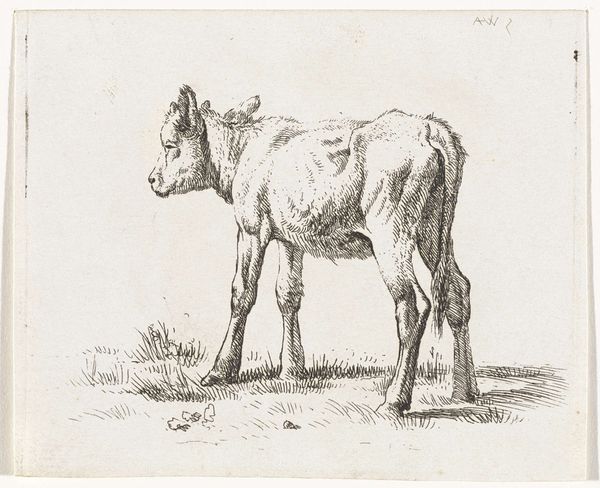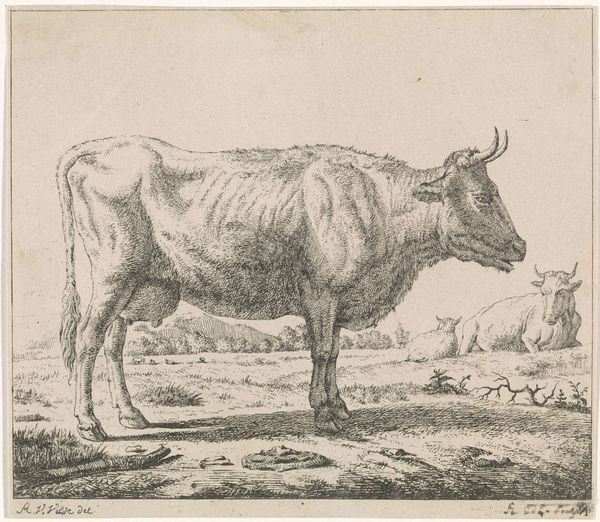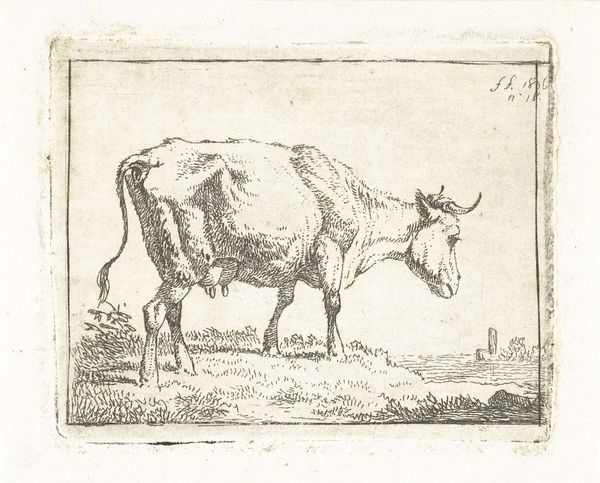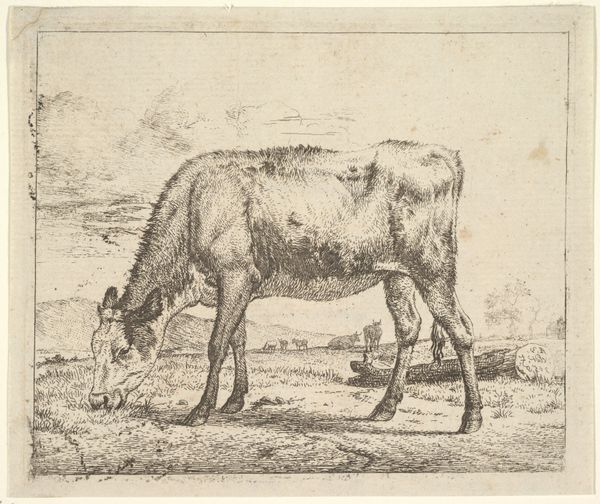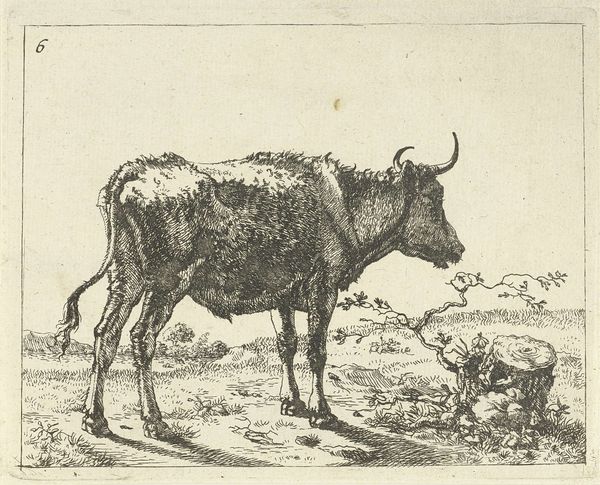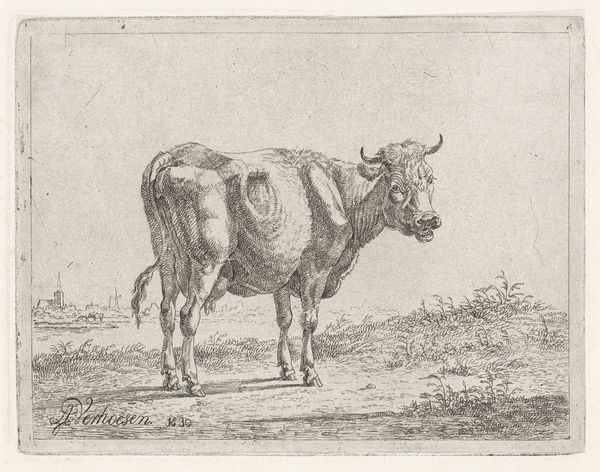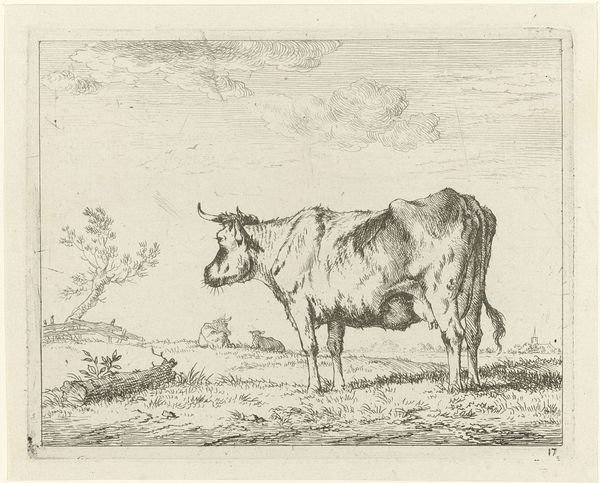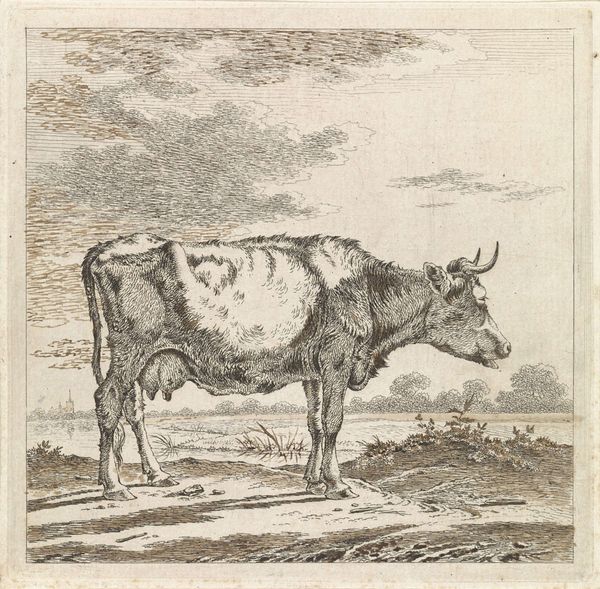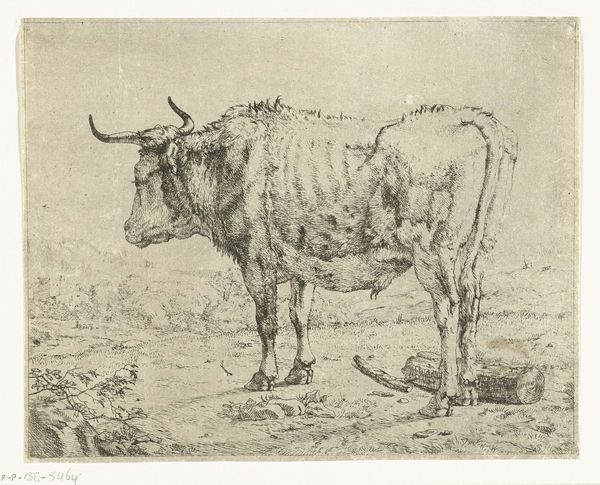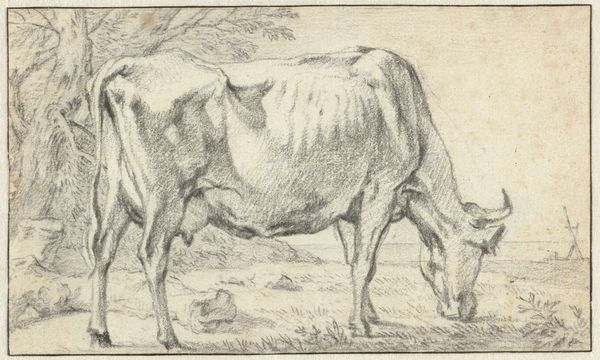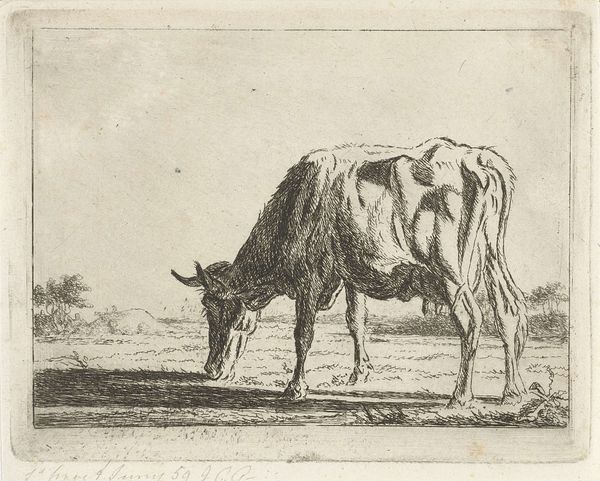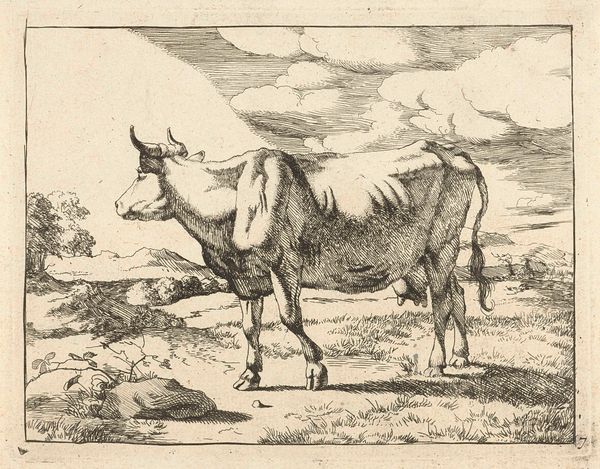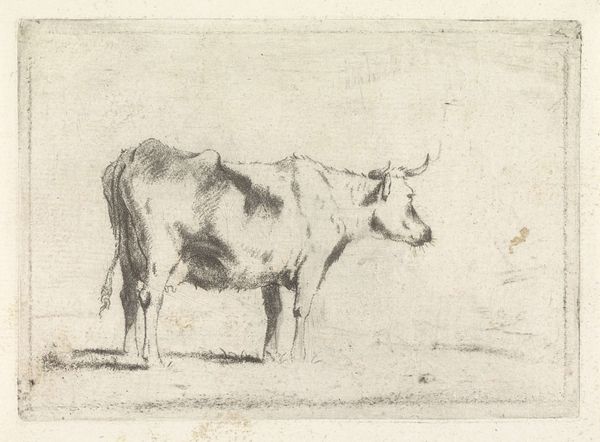
drawing, print, etching
#
drawing
#
animal
# print
#
pen sketch
#
etching
#
landscape
#
line
#
realism
Dimensions: height 62 mm, width 81 mm
Copyright: Rijks Museum: Open Domain
Jan Baptiste de Jonghe created this etching of a donkey in a field around 1815. Etching is an intaglio printmaking technique, meaning the image is incised into a metal plate, usually copper or zinc. The plate is covered with a waxy, acid-resistant ground, through which the artist scratches the design. The plate is then immersed in acid, which bites into the exposed metal, creating recessed lines. After removing the ground, the plate is inked, and the surface wiped clean, leaving ink only in the etched lines. Damp paper is then pressed against the plate, transferring the image. The resulting print has a distinctive quality, with fine, precise lines and subtle tonal variations. The image of a donkey in a field may seem simple, but the etching process itself involves considerable labor and skill. De Jonghe would have had to master the techniques of preparing the plate, applying the ground, etching the design, and printing the image. This reminds us that even seemingly humble subjects can be elevated through the careful application of craft.
Comments
No comments
Be the first to comment and join the conversation on the ultimate creative platform.
